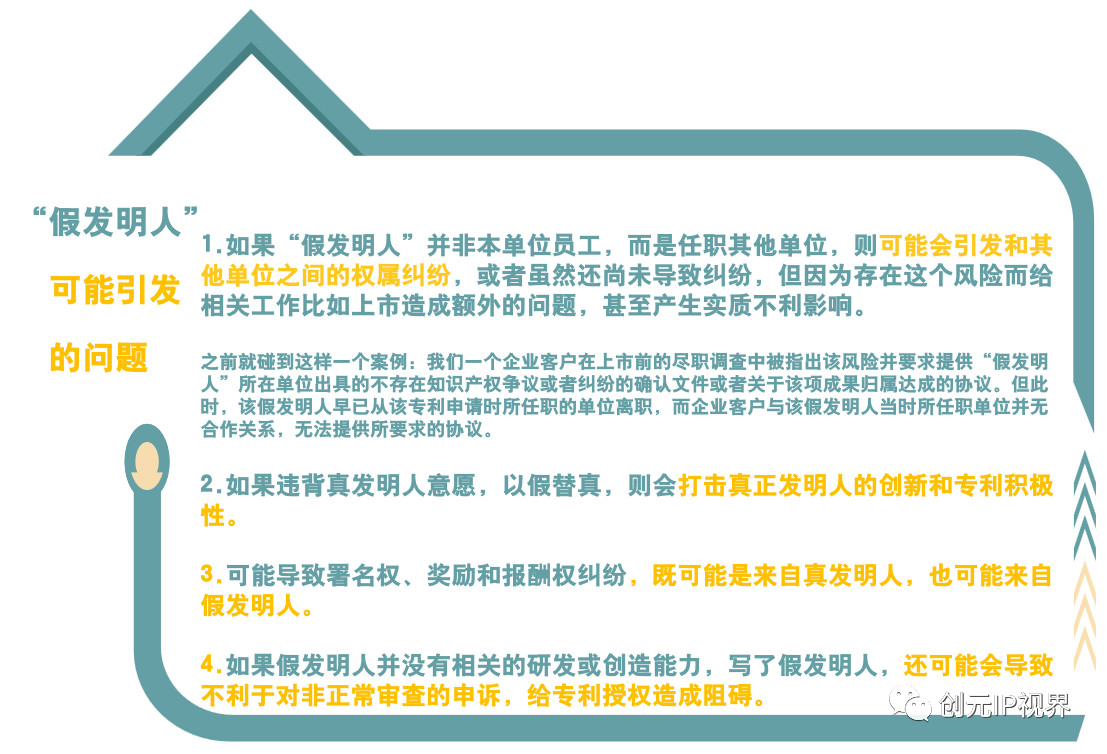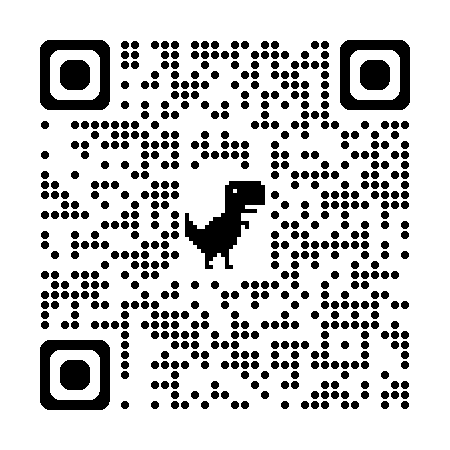23
2023-08
Patent Practice What is better for the inventor of a patent application?
Recently, because of a suspected abnormal case, the applicant (unit) was advised to prepare the resume of inventor A (to show the inventor's ability to make this invention). As a result, the applicant informed that the real inventor was B, not A, because B was inconvenient to show up and had to write another inventor, so he wrote A as inventor. To give the impression, the inventor determined to be more casual.
In fact, many applicants seem to be "casual" in their determination of inventors. For example, some applicants and all patent inventors are bosses or senior executives. Some applicants have to write 20 or 30 inventors. There are also applicants who have written some completely irrelevant people for reasons such as friendship and help.
However, the determination of the inventor is related to the distribution of rights, the distribution of benefits, the enthusiasm of innovation and the enthusiasm of the patent, which should be highly concerned and taken seriously by the applicant. Today, let's take a look at how to determine the inventor is better.
First, let's look at what an inventor is and what rights an inventor has under the law.
What is an inventor?According to Article 13 of the Implementing Regulations of the Patent Law (2010 Revision), the inventor or designer referred to in the Patent Law refers to a person who has made creative contributions to the substantive characteristics of the invention-creation. In the process of completing the invention-creation, the person who is only responsible for organizing the work, providing convenience for the use of material and technical conditions, or engaging in other auxiliary work is not the inventor or designer.
What rights do inventors have?
According to Article 849 of the Civil Code, Article 16 of the Patent Law and Chapter 6 of the Implementing Regulations of the Patent Law,The inventor has the right of signature, reward or remuneration.
The inventor's right of signature is embodied in the following aspects: the right to decide whether to sign; the right to decide the way of signing (public or not?); the right to decide the order of signing; the right to refuse non-inventors to sign on patent documents; the right to refuse others to list themselves as inventors without consent, etc.
The statutory right to an award is only available after the announcement of the patent grant.Regarding the payment of specific rewards, first look at the agreement, that is, follow the agreement between the applicant and the inventor; if there is no agreement, then look at the statutory. The statutory payment time is within three months from the date of the announcement of the patent right. The bonus for inventions shall not be less than 3000 yuan, and the utility model or appearance shall not be less than 1000 yuan.
The statutory right to remuneration is only available after the patent grant is announced and implemented.. Regarding the payment of specific remuneration, it is also to look at the agreement first, if there is no agreement, then look at the statutory. Statutory distinction between two situations. If the patent is implemented by the right holder himself, a certain percentage (not less than 2 per cent for inventions/utility models and not less than 0.2 per cent for designs) shall be withdrawn each year from the operating profits of the patent. If the patent is licensed to others for implementation, not less than 10% of the patent license fee shall be withdrawn each year as remuneration to the inventor.
In some overseas countries such as the United States and South Africa, inventors also have legal patent application rights.In a country where the inventor has the legal right to apply for a patent, the patent applicant can only be the inventor or the assignee, which means that,Companies or other organizations to apply for patents in these countries have to rely on the inventor to sign the transfer.
So, after the patent application inventor can want to change? The answer is:Although there is an opportunity to change the inventor throughout the life cycle of a patent, the change is conditional and there are traces of the change.
The circumstances in which the inventor can be changed as stipulated in the patent examination guidelines are limited to missing or wrong filling, qualification disputes, change of name, change of translation name,Excluding inventor transfers.
According to the latest practice, if an inventor needs to be added, it is usually necessary to submit proof materials that can constitute an inventor in the sense of patent law, such as creative generation process, research and development process data, etc. It is unrealistic to expect to buy a patent and hang up your name as an inventor. In addition, the inventor's change record is available, including the certificate will be reflected. After adding, always a little so indecent. Subtract, also can not erase the traces of the original inventor.
Based on the above-mentioned rights owned by the inventor, the applicant should consider the inventor's matter as an important content, and considering the limitation and mark of the inventor's change, it is best to consider it when submitting the application at the beginning.
specifically,When establishing the inventorIt can be considered from the following six aspects.

One: try not to write "wig"
According to the above-mentioned provisions, all those who have not made creative contributions to the substantive and specific inventions (or, in layman's terms, those who have made the necessary enlightenment, ideas, and plans for inventions and creations, whether they are positive or negative, all without help) are "wig inventors", and vice versa, they are "true inventors".
In practice, there are still many cases of writing "wig inventor" due to the inconvenience of real inventors to show up, or "help", or other reasons, but this situation is the most likely to cause problems, so it should be avoided as far as possible.

Two: try to write"True inventor.”
The non-portrait of the inventor is not in accordance with the law and may lead to disputes over the right of signature, reward or remuneration. The most important thing is that it will greatly undermine the enthusiasm of inventors to innovate and write patents. Even some inventors may take some actions that are not conducive to the company, such as secretly writing patents without the company's consent, causing the company to lose control of its innovations.
Last year, we encountered a case like this. One day, someone found out that we wanted to apply for a patent in the name of an individual. After we communicated, we found that he was an employee of one of our corporate customers, so we informed the relevant regulations on job invention, but he said that he still wanted to apply in the name of the company, but he didn't want the company to know. This surprised us. After all, the cost of invention patents is not low for individuals. Later, after in-depth understanding, it was discovered that the fundamental problem may lie in the problem of internal inventors.
Three: write "part-time inventor" should pay attention to add an agreement
Part-time jobs here are taken in a broad sense, such as one person holding multiple jobs, one person opening or controlling multiple companies, and doing "private work" outside the main business. For example, it is common that the company cooperates with the teachers of the school/scientific research institution/hospital. Or, the situation that the teachers of the school or scientific research institution set up their own company. ApplicantWhen there is a part-time inventor, special attention should be paid to adding an agreement with the unit where the part-time inventor's labor relationship is located.(Otherwise don't write)to make it clear that the applicant has all the rights to the patent. If there is no such agreement, the company applies for a patent, and the inventor includes employees of other units, and then is discovered by other units, which may cause problems.
Last year, we were entrusted by an enterprise to act as an agent for a very important patent. Both the agent and the inventor spent a lot of painstaking efforts. However, not long after the patent was published, the enterprise told us to withdraw it. Only after asking the reason did we know that one of the inventors of the patent was a teacher of the research institute. The research institute has now discovered that the right to apply for the patent belongs to the research institute, finally, after negotiation, only the enterprise withdrew the patent and the research institute did not pursue the result. It is a pity.
Four: pay attention to sorting, control the number of people
Although there is no law explicitly stipulating that inventors in different positions have different legal status, it has become a general consensus that "the higher the ranking, the greater the contribution. Correspondingly, in the selection of relevant awards, projects and professional titles, there are requirements for the order of inventors (generally speaking, it is useless to rank after the 6th place). For example, according to the "Jiangsu Patent Award Evaluation Method" and "Jiangsu Patent Award Evaluation Method Implementation Rules", only the top three applicants are eligible for inventor award declaration. Therefore, it is best to arrange the order according to the size of the contribution or according to the needs of the project plan.
In addition, in terms of the number of inventors, although the law does not stipulate an upper limit on the number of inventors, it still needs to be controlled. The reason is that without considering the allocation or dispute of rewards or remuneration, it may be very troublesome in terms of procedures. For example, any change of the inventor requires the signature of all inventors, and the signature of the inventor is also required to apply for a patent for patented technology in the United States, South Africa and other countries. If the inventor writes too much, it is conceivable that the procedures will be very troublesome. Considering a certain turnover rate, it is common that people cannot be found when they need to sign.
Five: consider when necessary"Not a public inventor.”
Although the law stipulates that the inventor must be filled in, but inOne or more or all of the inventors can be flexibly selected as "non-public inventors" when submitting an application"Sometimes it helps.
Six: in advance to obtain the consent of the inventor himself
To list it as an inventor without the consent of others is an infringement of the right of authorship of others and may cause trouble and loss to others. If it is investigated, it may be necessary to bear the consequences of stopping the infringement, apologizing and compensating for the loss. Therefore, it is also important to obtain the consent of the inventor.
In the case of (2017) Beijing 73 Minchu No. 437, the defendant company listed Li Moumou, who has relatively high influence in the field of environmental protection and dust removal, as the inventor without the consent of Li Moumou, which led to the lawsuit. Finally, the court ruled that the defendant company should bear the responsibility of stopping the infringement and ordered the defendant to publish an apology statement in China Patent and Invention magazine and the company's website, as well as compensation for the plaintiff's economic losses of 30000 yuan.
Above, from what is the inventor, what rights the inventor enjoys, the inventor determines the need to consider six aspects are discussed. In summary, it is recommended that under the legal framework, based on the principle of fairness and reasonableness, after considering and balancing the interests of all parties, the list of inventors should be finally determined to achieve the purpose of reducing risks, promoting innovation and patent protection.
undefined





